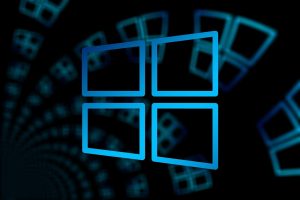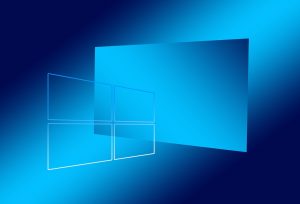Making the Switch – Migrating Between Operating Systems

In today’s computing world, users have more operating system choices than ever before. The three major desktop and laptop OSes – Windows, macOS and Linux – all have their strengths and weaknesses. On mobile, Android and iOS dominate smartphones and tablets. Users may find themselves needing or wanting to switch from one OS to another at some point, whether for work, curiosity or preference changes. But migrating fully to a new operating system can be challenging. In this essay, we’ll look at the technical and user considerations around switching operating systems and best practices for a successful transition.
Choosing a New Operating System
The first step is deciding which operating system to switch to. Here are some key considerations:
– Intended use – what applications and workflows are essential? Is the OS well suited to required tasks?
– Hardware compatibility – does the hardware work fully with the new OS, especially critical components like WiFi and graphics?
– Software compatibility – do key applications and programs have versions that work on the new OS?
– Ecosystem lock-in – are you heavily invested in services and the app ecosystem of the old OS? Is migrating data and workflows feasible?
– Learning curve – how comfortable are you learning and troubleshooting quirks of the new OS? Is good training/support available?
– Cost – does switching OSes require purchasing new licenses or hardware?
Dual-booting can be a good intermediary step to test out a new OS before fully committing. Trying live boot media like Linux USB drives can also give a taste of the user experience. For enterprises, running trials on test machines is key before large-scale deployment.
Data Migration Preparation
Once an operating system is selected, next comes preparing user data for migration. On modern OSes, users’ digital lives are often spread across multiple locations:
– Documents and media files on local storage or home directories
– Emails, contacts and calendar data
– Web bookmarks, cookies and cached files
– App settings and preferences
– Keys, certificates and access tokens for services and accounts
– Specialized data like financial records or creations in editing apps
Ideally, critical files should be backed up to external media or cloud storage to avoid data loss if anything goes wrong. Cloud sync services like Dropbox can keep folders neatly synced across OSes.
Many default folder locations differ between OSes – like Documents/Music/Pictures on Windows vs /Users/name/ on macOS vs /home/name/ on Linux. So file organization may need restructuring for the new paths.
Stripping out unnecessary cruft before migration helps retain only important data. And storage limits on some OSes like iPadOS may require culling files.
Migrating Apps and Settings
Beyond personal data, properly migrating installed applications and their settings is also essential. For cross-platform apps like Chrome, Firefox, Zoom, MS Office, etc, the same binaries can transfer over or reinstall from scratch. The challenge is copying over app settings and cached data so configurations survive the transition.
On Windows, the AppData folder contains many app settings. On macOS, these are under /Users/name/Library/Application Support. Linux dotfiles in /home/name/ act similarly. These dotfiles should be archived to transfer configurations.
For OS-exclusive apps, alternatives must be found on the new platform – like substituting Microsoft Office for iWork apps on macOS. Data files may require conversions between app formats.
Finally, software licenses and keys don’t always allow transferring between OSes and may need repurchasing.
Migrating Between Desktop OSes
Let’s look at some specific migration scenarios between the big three desktop operating systems: Windows, Mac OS and Linux.
Windows to Mac
Switching from Windows to Mac requires adapting to very different interface paradigms. Mac OS focuses heavily on simplicity and common conventions across apps. Long-time Windows users will need to unlearn habits that don’t work on Mac.
The Apple Migration Assistant tool makes transferring user accounts, files, settings and apps across relatively painless. It moves data from a Windows PC backup or during setup of a new Mac. Photos can be migrated from Windows libraries to the Photos app.
For software, Mac versions are available for many major Windows apps like Microsoft Office, Adobe Creative Cloud, etc. Apps purchased on the Windows Store do not transfer, so macOS alternatives must be found.
Windows to Linux
Linux has more technical migration hurdles due to its diversity of distributions and desktop environments. Each configures the filesystem hierarchy and handles apps and settings differently.
Critical data can be copied manually into equivalent home folders on Linux. Utilities like Konvertor help copy over local user account details like user ID and desktop background. For applications, open source apps like LibreOffice, GIMP, VLC etc have Linux versions that mimic functionality of proprietary Windows tools.
Hardware driver support can be an issue with some Linux distros on certain PCs – especially discrete Nvidia/AMD graphics cards and WiFi chipsets. Choosing hardware tested to work well with the Linux distro helps avoid issues. Dual-booting eases the transition by allowing boot back into Windows when needed.
Mac to Windows
Switching from Mac to Windows generally has fewer hurdles thanks to Parallels and other virtual machine tools that run Windows on Mac hardware seamlessly.
The Surface Parallels Image tool builds a virtual hard drive file from a Mac that can then boot directly on Surface Windows devices. Apple’s Boot Camp assistant also helps dual-boot or format Mac drives for Windows installation.
Mac user accounts, files and settings integrate well on Windows. The Apple iCloud app even syncs Photos library and other content into Windows seamlessly. For software, Windows versions exist for many Mac apps like MS Office and Adobe CC apps.
Mac to Linux
Migrating from macOS to Linux again depends on target distro and desktop environment selection. Since both macOS and many Linux distros stem from UNIX roots, similarities in filesystem layouts and terminal usage help the transition.
User data in Mac /Users/name/ folders maps cleanly to Linux /home/name/. Some config dotfiles may need converting between formats. Permissions issues may pop up moving Mac disk images and DMGs to Linux.
Very few native GUI Mac apps run directly on Linux. So replacing tools like Final Cut Pro, GarageBand and iWork requires finding alternative open source creative apps on Linux. Fortunately, most command line tools and programming language support carries over nicely between macOS and Linux.
Mobile Operating Systems
There are fewer options moving between dominant mobile operating systems iOS and Android. But switching still poses challenges around data and app migration:
– Contacts, calendars and email switch via sync accounts like Google, removing reliance on platform backups.
– Photos and videos should be manually copied off before switching phones and platforms.
– App data usually doesn’t transfer between platforms, requiring reinstalls and fresh app setup on the new device.
– Paid apps, in-app purchases and subscriptions rarely carry over between platforms. Costs may be incurred rebuying apps.
– SMS text message history, call logs and device settings do not transfer between platforms out-of-the-box.
Some third-party tools like Apple Move to iOS or the Move to Android app can assist transferring contacts, messages, photos and videos during the mobile OS switch process.
Enterprise Operating System Deployment
For organizations managing fleets of user devices, standard tools exist to automate OS deployment and configuration at scale:
– Windows uses the Windows Assessment and Deployment Kit (ADK) for imaging devices with standard configs.
– macOS leverages Apple Remote Desktop and the Device Enrollment Program.
– Linux utilizes system imaging tools like Clonezilla plus configuration management software like Ansible, Puppet or Chef.
Network admins also utilize tools like WDS, SCCM, MDT and Nomad for managing large Windows rollouts. For user data, network file shares and Microsoft’s roaming profiles facilitate syncing data between machines. OS upgrades are typically orchestrated gradually across an organization to smooth out compatibility issues with line-of-business apps.
Best Practices for Switching Operating Systems
To summarize, some best practices for a successful OS migration include:
– Research software and hardware compatibility with the new OS thoroughly before switching.
– Back up all critical user data to external media or cloud storage as a precaution.
– Dual-booting can allow testing a new OS without commitment during initial transition.
– Start switching cold turkey on a non-critical secondary device to learn the new workflow.
– Migrate data in stages – focus on essential documents and media files first.
– Prioritize finding replacements for daily apps and tools key to the user workflow.
– Transfer configurations for cross-platform apps where possible to retain settings.
– Copy important dotfiles and application support folders containing app configs.
– Study guides and tutorials for the new OS; don’t rely purely on prior OS knowledge.
– Give it time. Mastering the quirks and workflows of a new operating system happens gradually.
With careful planning and patience, switching operating systems can expand computing horizons and capabilities. Each OS has unique strengths and trade-offs. Trying out alternate environments empowers users to work and customize devices to best suit their needs. While challenges exist during migration, the rewards of fluency in multiple operating systems are manifold.








